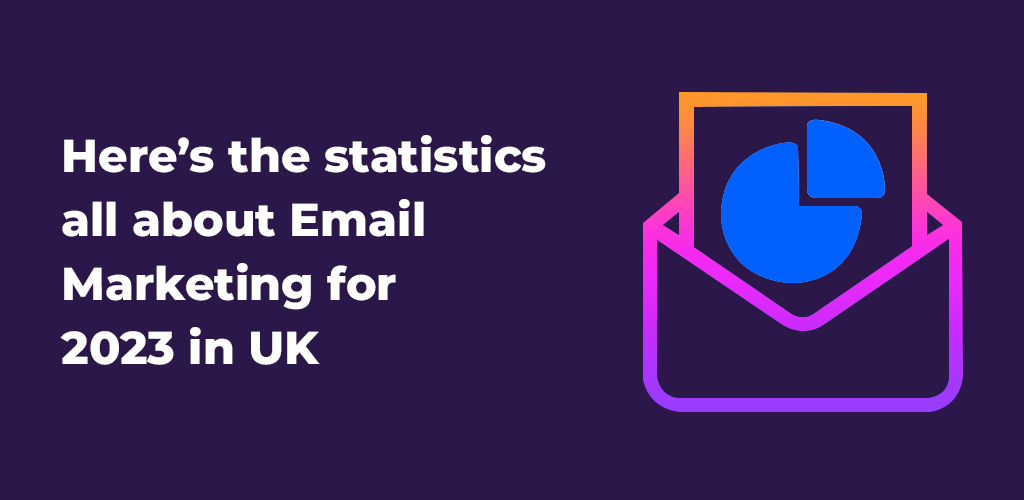Here’s the statistics all about email marketing for 2023 in UK
Advertising and brand management tools are application software, portals, or solutions that assist firms in marketing potential clients their products and services.
Here are some examples:
- Media platforms such as Facebook, Instagram, Twitter, and LinkedIn are essential corporate advertising tools. They allow businesses to reach a large number of people, communicate with patron, and increase brand awareness.
- Advertising automation solutions may assist orgnaisations interact with their client base in a more focused and personalised way. Automation, segmentation, and analytics are common elements of these solutions.
- SEO tools help businesses improve their search engine ranks by maximising articles, keywords, and metadata.
- Pay-per-click (PPC) advertising: Tools like Google Ads and Facebook Ads enable businesses to run tailored adverts to reach potential consumers.
- CRM software: CRM software assists firms in managing customer contacts and tracking sales prospects.
- Content marketing solutions such as HubSpot and Hootsuite assist organisations in creating and distributing content that attracts and engages customers.
- Analytics and tracking channel such as Google Analytics and Adobe Analytics let businesses measure website traffic, consumer behaviour, and campaign performance.
Overall, company marketing tools are essential for businesses seeking to develop its branding, boost conversions, and improve income.
Today, we’ll look at Email Marketing campaigns. Then let commence by explaining what E – marketing comprises.
Electronic mail marketing is a sort of content marketing in which marketing materials or periodicals are provided to a targeted audience via electronic mail. It is one of the most cost-effective and efficient methods of reaching out to clients and establishing long-term partnerships.
Some of the most critical features of electronic mail advertising are as follows:
- Creating an electronic mail database is the first step in electronic mail campaigns. User identities can be gathered by website sign-ups, online forms, or even by directly asking clients.
- Electronic mail Content: When you’ve built a list, create appealing electronic mail content that will attract the attention of your intended audience. This includes special offers, promotions, news and updates, product launches, and instructional content.
- Electronic mail Design: Your electronic mail’s look is equally as crucial as its content. Consider making your electronic mails aesthetically beautiful, mobile-friendly, and simple to read. To promote clicks, use eye-catching visuals and comprehensible calls-to-action.
- Electronic mail Frequency: It is critical to choose the appropriate frequency for your electronic mail marketing. Sending too many electronic mails can irritate subscribers and lead to unsubscribes, whilst sending too few can lead to low engagement.
- Eventually, it is vital to measure and analyse the performance of your electronic mail campaigns. This may help you determine what is and is not working so that you can adjust your strategy accordingly.
- Electronic mail marketing is a very effective tool for organisations of all kinds. You can enhance engagement, generate sales, and develop long-term connections with your consumers by building targeted, tailored campaigns.
Electronic mail marketing has evolved significantly in the United Kingdom over the years. Some of the main turning moments in the evolution of electronic mail marketing in the United Kingdom are as follows:
- In the early days of electronic mail marketing, businesses would simply send out mass electronic mails to a list of subscribers. This strategy was not highly targeted, and many receivers perceived these electronic mails as obnoxious and undesired.
- The growth of permission-based electronic mail marketing: In the late 1990s and early 2000s, authorization based electronic mail marketing became widespread. This method entails requesting subscribers for permission to send those electronic mails, resulting in increased engagement rates and more tailored messages.
- The advent of electronic mail automation: As electronic mail marketing grew in prominence, automation became a must-have tool for marketers. Automatic electronic mails, such as welcome electronic mails and abandoned cart reminders, enabled businesses to send tailored messages to their subscribers while needing little administrative work.
- GDPR’s Implications: In May 2018, the General Data Protection Regulation (GDPR) went into effect, requiring businesses to get explicit agreement from subscribers before sending them marketing electronic mails. As a result, several businesses have updated their electronic mail marketing strategies and been more upfront about data gathering and utilisation.
- Personalization is important: In recent years, electronic mail marketing has grown increasingly personalised. Marketers use data to produce highly targeted and personalised electronic mail messages that are well received by subscribers.
- Generally, electronic mail marketing in the United Kingdom has progressed from bulk mailings to highly targeted and individualised efforts. Electronic mail marketing is getting more complex and focused on creating connections with subscribers, thanks to the advent of automation and the impact of GDPR.
Here are some noteworthy email marketing data for the United Kingdom:
- According to the DMA (Direct Marketing Association), email has an average ROI (return on investment) of 42:1 in the UK, which means that firms can anticipate an average return of £42 for every £1 spent on email marketing.
- According to a MarketingSherpa report, 59% of UK customers prefer to get promotional emails on a weekly basis.
- According to a Royal Mail poll, 47% of UK customers had made a purchase as a consequence of a marketing email they received.
- An Econsultancy poll found that 73% of UK marketers consider email to be an excellent or decent medium for delivering ROI.
- According to a GetResponse survey, the average open rate for email marketing in the UK is 21.8%.
- A recent Adestra survey, personalised emails had a higher open rate of 29.3% in the UK than non-personalized emails, which have an open rate of 23.9%.
- In accordance with a Litmus survey, mobile devices account for 55% of email openings in the UK.
- Based on an Adestra poll, 78% of UK marketers say email marketing is critical to their business strategy.
- From a Statista poll, the most common reason for UK customers to unsubscribe from email lists is receiving too many emails (47%).
According to a study conducted by Experian research, email subject lines that include the recipient’s first name had a 26% greater open rate in the UK than non-personalized subject lines.
- In 2023, email marketing will remain a significant technique for organisations in the UK drop shipping industry. Here are some of the reasons:
- Customer communication: Email marketing helps drop shippers to engage with their consumers directly, giving customised and relevant material. This promotes consumer retention and encourages repeat purchases.
- Email marketing is generally affordable when compared to other kinds of marketing, making it an excellent alternative for small drop shippers with limited marketing expenditures.
- Email marketing allows drop shippers to measure the efficacy of their campaigns through open and click-through rates, offering insights into what works and what doesn’t. This enables companies to fine-tune their marketing strategy and increase their ROI.
- Automation: Email marketing may be set up to deliver customised messages to consumers at key phases of the customer journey, such as abandoned cart reminders or post-purchase follow-ups, using automation solutions.
- Mobile-friendly: Because the majority of people get their emails on mobile devices, email marketing may be optimised for mobile, ensuring that messages are easy to read and click on smaller displays.
- GDPR compliant: With the adoption of GDPR (General Data Protection Regulation) in 2018, email marketers must guarantee that they have authorization to send marketing emails from recipients. This implies that companies must get explicit permission from their clients, which can result in higher-quality email lists and more engaged membership.
Lastly, email will be a significant strategy for UK drop shippers in 2023. It provides a cost-effective, quantifiable, and direct method of communicating with clients, and with the appropriate techniques, it may assist organisations in developing strong customer connections and driving sales.
Feel at ease when integrating the AVASAM platform, which has been designed in such a manner that it is highly digital marketing friendly and is available on all platforms for digital advertising.



DropShip products from verified suppliers to diversify your inventory and scale your eCommerce business